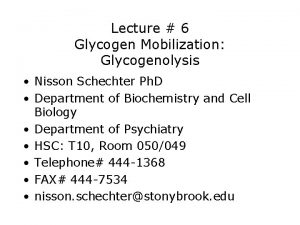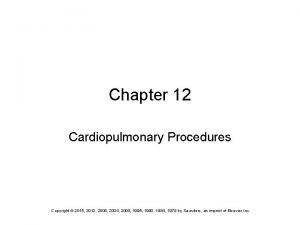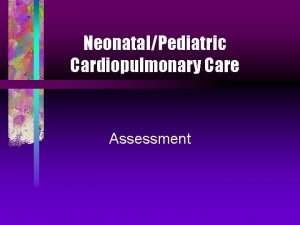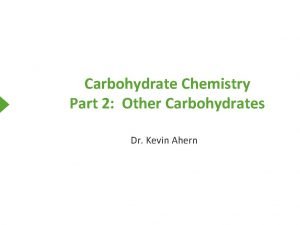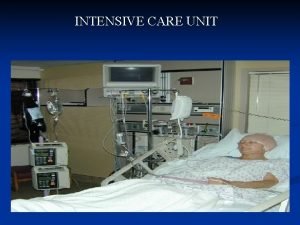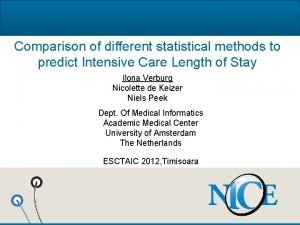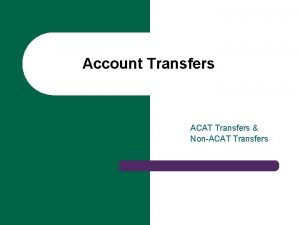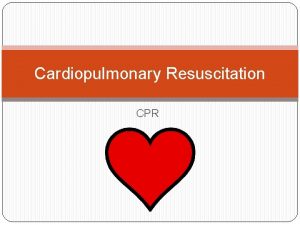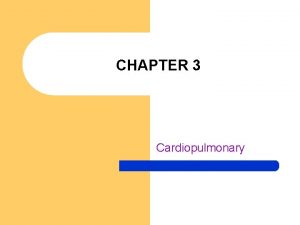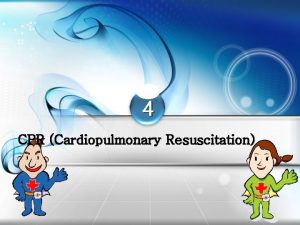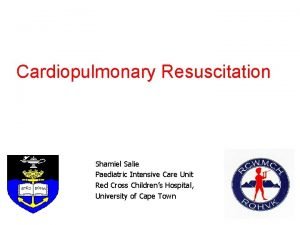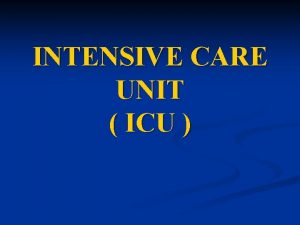Reducing Cardiopulmonary Arrests and Intensive Care Transfers Using












- Slides: 12

Reducing Cardiopulmonary Arrests and Intensive Care Transfers Using a Pediatric Rapid Response Team Erich Maul, DO Sarah Heck, MBA Lee Ann Russell, RN, BSN Barbara Latham, RN, MSN

Disclosures • None of the authors have any documented financial relationships to disclose or any Conflicts of Interest (COI) to resolve • None of the authors have documented that this presentation will involve discussion of unapproved or off-label, experimental or investigational use

Background • IHI’s 100, 000 Lives Campaign – Develop RRT’s • What is their impact? – Adults: ? no impact on mortality

Objective • To describe the impact of a pediatric rapid response team on: – rates of inpatient cardiopulmonary arrest – transfers to elevated levels of care.

Methods • Pre- & Post-intervention study – June 2009 -September 2010 (pre-intervention) – October 2010 -July 2011 (post-intervention) • Multidisciplinary root cause analysis performed in October 2010 • Resulted in an enterprise-wide education program

Methods Data Collected Data Calculated • Number of PRRT calls transferred to PICU • Number of CPA’s outside of PICU • Number of monthly admissions from financial data • PRRT calls/1000 admissions • CPA’s/1000 admissions • Percentage of PRRT calls transferred to PICU • Natural logarithmic transformation of the percentage of PRRT calls transferred to the PICU

Methods • Statistics – Poisson regression for comparison of the rate differences – 95 th percentile confidence interval for the rate difference

Results Pre. Post. Rate Intervention p-value Difference (16 months) (10 Months) Total Calls to PRRT Total Admissions CPA outside the PICU PRRT Calls/1000 admissions CPA/1000 Admissions Percentage of PRRT Calls Transferred to PICU 95% CI 52 64 8547 5095 5 1 6. 08 12. 56 6. 48 0. 0001 0. 59 0. 20 0. 39 <0. 0001 0. 22 -0. 56 48. 1 34. 4 13. 7 <0. 0001 3. 28 -9. 68 8. 1 -19. 3

PRRT utilization 106% increase in utilization; (p=0. 0001)

PRRT calls transferred to the PICU Reduced PICU transfers by 28%, (p<0. 001)

Correlation between PRRT call volume and percentage of calls resulting in PICU transfer y = -0. 1307 x + 4. 4593 R 2 = 0. 3111 R = 0. 56

Conclusions • PRRT’s decrease both CPA rates and PICU transfers • Increased utilization results in decreased transfers to the PICU
 Fates of glucose 6 phosphate
Fates of glucose 6 phosphate Fehling's test sucrose
Fehling's test sucrose What is reducing sugar
What is reducing sugar Crossword puzzle cardiopulmonary procedures
Crossword puzzle cardiopulmonary procedures Cardiopulmonary
Cardiopulmonary Cardiopulmonary
Cardiopulmonary Chapter 17.11 providing first aid for sudden illness
Chapter 17.11 providing first aid for sudden illness Basics of word building and pronunciation
Basics of word building and pronunciation Systemic circulation flow chart
Systemic circulation flow chart Reducing vs non reducing sugars
Reducing vs non reducing sugars Levels of care primary secondary tertiary
Levels of care primary secondary tertiary Concept of intensive care unit
Concept of intensive care unit Intensive care units
Intensive care units
